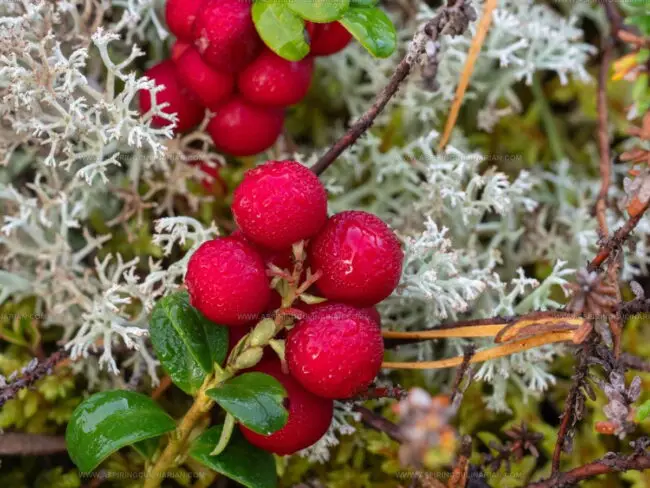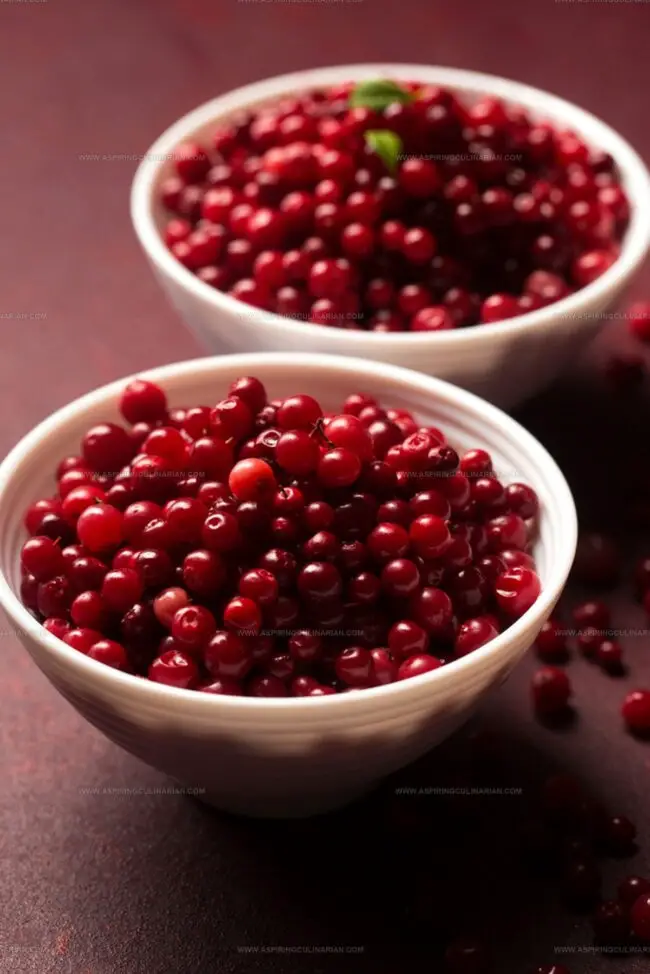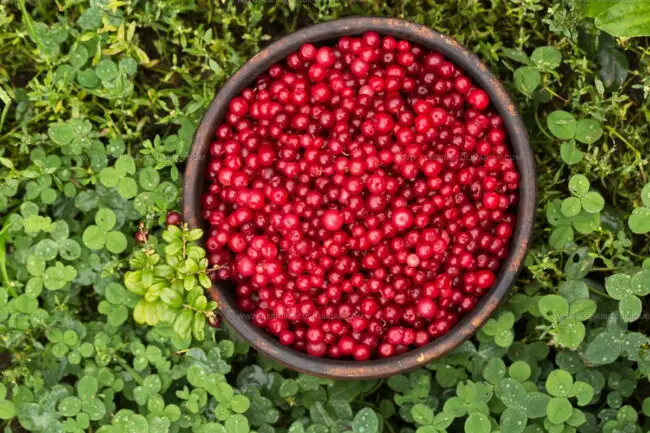What Does Lingonberry Taste Like? Uncover This Nordic Berry’s Zing
Lingonberries have captivated food enthusiasts with their unique culinary profile and intriguing characteristics.
Small, vibrant red berries grow wild in Nordic forests, holding a special place in Scandinavian cuisine and culture.
Nordic families have cherished lingonberries for generations, incorporating them into traditional dishes and preserves.
The berry's reputation extends far beyond its homeland, sparking curiosity among food lovers worldwide.
Chefs and home cooks alike find themselves drawn to this mysterious fruit, wondering about its distinctive flavor profile.
Regional traditions and culinary practices have elevated lingonberries from a simple forest fruit to a gourmet ingredient.
Understanding the nuanced taste of lingonberries requires a deeper dive into their sensory experience.
Let the journey into this fascinating berry's flavor adventure begin.
Lingonberry Facts
Lingonberries are bright red berries from northern forests, loved in Scandinavian cuisine for their sharp, tangy taste and unique uses:
Curious cooks and food lovers can enjoy exploring the many recipes and flavors that lingonberries have to offer.
Lingonberry Flavor Guide
Lingonberries shine with a deep red color, but their appearance can trick you.
These tiny berries pack a sour punch with just a whisper of sweetness, making them less than ideal for direct munching.
Red berries this small and juicy have softer insides compared to cranberries, another fruit not typically enjoyed straight from the plant.
Similar to red currants, lingonberries bring a sharp, tart flavor to the table.
While you could pick lingonberries right off the bush, their taste might make you pucker.
Their intense sourness makes raw eating uncomfortable.
Smaller and more delicate than cranberries, these berries work best when mixed with other ingredients.
Cooks often blend lingonberries into sweet or savory dishes to balance their sharp taste.
Mixing them with yogurt or stirring them into morning oatmeal helps soften their acidic edge while keeping their signature tangy character intact.
Lingonberry Types
Below are different types of lingonberries with a short description for each.
Erntesegen (Means “Harvest Blessing” In German)
Raspberry plants from this hardy variety first appeared in gardens during 1981.
Gardeners appreciate its ability to grow quickly and strongly.
Sweet berries hang from its branches in generous amounts.
Unlike its more sour cousin Koralle, these fruits offer a gentle, smooth taste.
Large light red raspberries make this plant stand out from other garden varieties.
Koralle
Koralle strawberries stand out as top favorites across Holland, dominating European markets.
Strong green plants grow tall and healthy with smaller berries packed with sharp taste.
These fruits taste zesty and provide intense flavor when mixed with Sussi strawberries, which offer gentler notes and higher crop yields.
Red Pearl
Bred in 1983, this Dutch potato type grows big potatoes with a gentle taste.
Researchers found it shows strong defense against harmful root disease.
Potatoes from this variety ripen faster than Koralle, coming to harvest about two weeks earlier.
Opulent
Hardy plum trees grow well in cold regions, and Regal stands out as a prime example.
Dr. Elden Stang selected this special variety after collecting seeds in Finland.
Regal shows remarkable qualities with its large fruits and quick production of plums after planting.
Scarlet
Norwegian tree sprouts grow well and shine as key helpers for other plants.
This species creates large amounts of pollen that support pollination across different environments.
Sussi
Swedish tomatoes grow slowly but reward gardeners with lots of big red tomatoes once they mature.
Careful tending helps these plants develop strong roots and produce abundant harvests.
Patience matters most when growing this specific tomato type, since the initial growth period stretches longer than other garden varieties.
Gardeners who stick with these plants will see impressive results when red fruits finally appear in full force.
Lingonberry: Health Benefits
Small red berries called lingonberries have played important roles through history.
These special fruits work as nourishment and healing support.
Health experts recognize lingonberries as strong partners against serious medical challenges.
Science shows these berries help block weight increases when someone eats fatty foods.
Medical studies suggest lingonberries can slow down diabetes risks and battle weight problems.
Rich with helpful compounds, these berries protect body systems and support overall health.
Their natural abilities make them powerful helpers for maintaining wellness and fighting potential medical issues.
Helps The Brain Work Better
Lingonberries pack a powerful punch for brain health thanks to their high iron and potassium levels.
Medical research highlights how these small berries support mental wellness in significant ways.
Blood cell production gets a boost from iron, which ensures better oxygen and nutrient flow to brain tissues.
Neurological cells receive protection from vitamin C found within these berries, defending against harmful free radical damage.
Scientists have linked consistent lingonberry consumption with lowered chances of developing memory-related conditions like Alzheimer's disease.
Brain function can improve when people include these berries in their diet, supporting overall cognitive health through natural nutritional support.
High In Antioxidants
Lingonberries share similarities with blueberries and cranberries in their high antioxidant content.
These powerful compounds work to block cellular harm from free radicals inside your body.
Protection from specific health conditions emerges as another benefit, while slowing down aging signs like skin wrinkles becomes possible.
Beyond basic antioxidant support, lingonberries help replenish depleted body antioxidants such as glutathione.
Scientific researchers refer to glutathione as master antioxidant because of its significant role in preventing numerous health complications.
Helps Prevent Heart Disease
Small red berries pack powerful health benefits for heart protection.
These berries contain high amounts of fiber that support blood vessel health and lower risks of serious heart conditions.
Dietary fiber works well to decrease harmful cholesterol while boosting good cholesterol levels in our bodies.
Key heart-protective qualities help block dangerous cholesterol buildup in blood vessels.
Chemical compounds inside these berries shield heart muscles from harmful damage caused by unstable molecules.
Antioxidants work hard to defend heart systems from potential breakdown and stress.
Regular consumption might support overall cardiovascular wellness by cleaning blood pathways and reducing inflammation.
Berries deliver natural defense mechanisms that strengthen heart muscles and blood circulation.
Heart health depends on smart nutrition choices, and lingonberries offer simple yet effective support through their rich nutritional profile.
Can Help Prevent Diabetes
Lingonberry offers powerful health benefits for managing blood sugar.
These small berries work hard to support insulin production inside our bodies, which helps control how quickly sugar moves through the bloodstream.
Lowering diabetes risk becomes easier with lingonberry's natural abilities to slow sugar absorption.
Medical research shows these berries have special properties that keep blood sugar levels steady.
Blood sugar control matters greatly for overall health, and lingonberries provide a natural way to support this important bodily function.
Diabetic individuals can enjoy lingonberries without concerns about sudden sugar spikes.
Rich dietary fiber in lingonberries adds another layer of protection for maintaining healthy blood sugar levels.
Researchers continue to study how these tiny berries can help people manage their metabolic health more effectively.
Nutrients packed inside lingonberries make them a smart choice for anyone watching their blood sugar and seeking natural health support.
Supports The Immune System
Lingonberry packs a punch with lots of vitamin C and vitamin A that help shield you from harmful germs like viruses and bacteria.
Vitamin C works hard as a strong defender against dangerous molecules that can harm your body's health system.
This special berry also helps make white blood cells, which fight off sickness and keep you strong.
Medical research shows that eating lingonberries can stop different types of common illnesses such as colds, fevers, flu, and coughs.
Lowers Cancer Risk
Small red berries called lingonberries pack powerful health benefits.
These tiny fruits contain strong amounts of vitamin C and vitamin A, which support our body's wellness and might lower cancer risks.
Natural defense helpers called antioxidants work inside lingonberries to stop harmful molecules from damaging healthy cells.
Scientists have found that these special molecules block dangerous free radicals that can trigger cancer development.
Multiple research studies show lingonberry can slow cancer cell growth in different parts of our body.
Medical research points to potential protection against several cancer types, such as skin, colon, and breast cancer.
Eating these little berries could provide important shield against serious health challenges by stopping harmful cell changes before they start.
Helps With Recurring Urinary Tract Infections
Tiny red berries pack powerful health benefits for bladder health.
Small chains of natural compounds inside lingonberries work to block harmful bacteria from attaching to bladder walls.
Research shows mixing lingonberry juice with cranberry juice can cut urinary tract infection risks by almost half for women.
Scientists believe these berries stop bacterial cells from making strong connections inside the urinary system, which helps prevent painful infections from taking hold.
Lingonberry Possible Side Effects
Lingonberry concentrate seems safe when used correctly.
Cranberry and lingonberry concentrate work well in drinks for six months without problems.
Using lingonberry leaves for a long time could be dangerous.
Harmful chemicals exist in these leaves, and researchers lack clear information about short-term safety.
Side effects might include stomach upset, nausea, and throwing up.
Certain chemicals in lingonberries that fight urinary bacteria could potentially cause serious health risks.
Studies suggest connections between these compounds and liver problems or cancer concerns.
Ways to Add Lingonberry to Food
Lingonberries bring a tangy, refreshing taste to many dishes, and there are plenty of easy ways to use them in your meals:
Lingonberries are easy to use and make any meal a little more lively with their bold flavor.






Nathaniel Brooks
Founder & Recipe Developer
Expertise
Farm-to-table cuisine, Seasonal recipe development, Culinary storytelling
Education
Ivy Tech Community College – Indianapolis, IN
Culinary Arts / Hospitality Administration & Events
Focused on hands-on training in classical and modern culinary techniques.
Nathaniel’s story starts in the foothills of the Appalachian Mountains, where farm stands, backyard gardens, and old family recipes shaped his love for real food. After graduating from Ivy Tech Community College in Indianapolis, he spent years working in farm-to-table kitchens, learning how to turn local, seasonal ingredients into something memorable.
Today, Nathaniel pours that same spirit into every single recipe on Aspiring Culinarian – recipes that feel real, comforting, and connected to the land. When he’s not in the kitchen, you’ll find him foraging wild herbs, chasing sunsets with his camera, or writing about the flavors that shaped his roots.